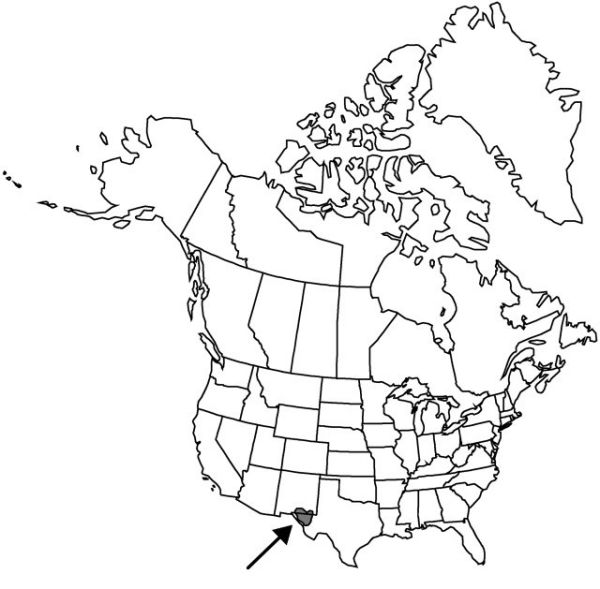Difference between revisions of "Agave gracilipes"
Rep. (Annual) Missouri Bot. Gard. 22: 95, plates 98, 99. 1912.
FNA>Volume Importer |
imported>Volume Importer |
||
| Line 47: | Line 47: | ||
|publication year=1912 | |publication year=1912 | ||
|special status= | |special status= | ||
| − | |source xml=https:// | + | |source xml=https://bibilujan@bitbucket.org/aafc-mbb/fna-data-curation.git/src/bb6b7e3a7de7d3b7888a1ad48c7fd8f5c722d8d6/coarse_grained_fna_xml/V26/V26_956.xml |
|genus=Agave | |genus=Agave | ||
|species=Agave gracilipes | |species=Agave gracilipes | ||
Revision as of 22:23, 27 May 2020
Plants acaulescent, sparsely suckering; rosettes usually solitary, 3–4 × 7–8 dm, dense. Leaves ascending, 18–30 × 4.5–7 cm; blade glaucous and yellow- or gray-green, not cross-zoned, lanceolate to broadly lanceolate, rigid, adaxially concave toward apex, abaxially convex; margins straight, armed, teeth single, well defined, 2–8 mm, 1.5–2.5 cm apart; apical spine reddish brown to gray, acicular, 2.5–5 cm. Scape (1.8–)4–5 m. Inflorescences narrowly to somewhat broadly paniculate, dense, not bulbiferous; bracts persistent, lanceolate, 1–3(–5) cm; lateral branches 30–40, slightly ascending, comprising distal 1/3–1/2 of inflorescence, longer than 10 cm, or short-scaped individuals (1.8–3.5 m) with only 7–20 lateral branches on distal 1/4. Flowers 6–45 per cluster, erect, 4–5.5(–5.8) cm; perianth red in bud, yellow to yellow-green at anthesis, tube broadly campanulate, 4–7 × 9–15 mm, limb lobes spreading to ascending, slightly unequal, 14–18 mm; stamens long-exserted; filaments inserted just below rim of perianth tube, erect, yellow, (2.8–)3–4.5 cm; anthers yellow, 16–20 mm; ovary 2.5–3.2 cm, neck constricted, 3–5 mm. Capsules sessile or short-pedicellate, oblong, 2.7–4.4 cm, apex beaked. Seeds 5–6.5 mm. 2n = 60.
Phenology: Flowering summer–early fall.
Habitat: Gravelly to rocky, often calcareous places in grasslands, desert scrub, and pinyon juniper woodlands
Elevation: 1200–1900 m
Distribution

N.Mex., Tex., Mexico (Chihuahua).
Discussion
Agave gracilipes probably represents an ancient hybrid involving A. lechuguilla and A. parryi subsp. neomexicana. In fact, hybrids between A. gracilipes and A. lechuguilla appear to occur at present. However, until populations of A. gracilipes are thoroughly studied cytologically, we are reluctant to designate this taxon as a hybrid species (e.g., see 8. A. ×arizonica).
Selected References
None.